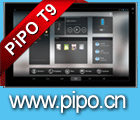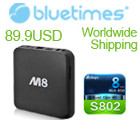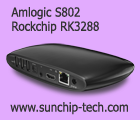Osbourne is a versatile carrier board for the NVIDIA Jetson AGX Orin high-performance GPU module. https://www.diamondsystems.com/products/osbourne It provides access to all I/O features of the Orin module and includes numerous sockets for I/O expansion. Osbourne has been designed to be used in almost any application ranging from commercial to industrial to airborne to rugged military use.
Key highlights of Osbourne include:
Industry-standard camera adapter socket for use with a wide range of CSI, GMSL, and other cameras
10Gb Ethernet + 1GB Ethernet ports
Wide temperature operation – matching the range of the Orin module
Dual minicard sockets with PCIe and USB interfaces
Dual M.2 sockets for flash memory (M key 2242/2280) and network connectivity (E key 2230)
I/O concentrator connector enables use with standard and custom I/O breakout boards
Osbourne is available as a carrier board alone or with an Orin module and fan sink installed and ready for use. A Linux OS based on Nvidia L4T and customized to support all I/O on Osbourne is available for free download.
Flexible I/O Connector Design
All I/O on Osbourne is accessed through a single high-speed, high-density connector along the board edge. This decouples the board design from any specific I/O connector arrangement and frees you to select whatever I/O connector scheme you want. Standard connector boards are available for typical use cases, including a panel-mount connector board for installation in an enclosure and a breakout board for use with cables.
OSBOURNE: Nvidia Solutions, NVIDIA Jetson Embedded Computing Solutions, NVIDIA Jetson AGX Orin
Panel I/O Board
The Panel I/O board provides the ability to install Osbourne directly into an enclosure without the use of cables. All I/O is provided on a series of commercial-style connectors designed to be mounted in an enclosure front panel.
OSBOURNE: Nvidia Solutions, NVIDIA Jetson Embedded Computing Solutions, NVIDIA Jetson AGX Orin
Panel I/O boards can also be designed with right-angle orientation. Below is an example of a connector board with MIL-DTL-38999 connectors for a rugged system using Orin.
OSBOURNE: Nvidia Solutions, NVIDIA Jetson Embedded Computing Solutions, NVIDIA Jetson AGX Orin
Front view, panel I/O board with MIL-DTL-38999 connectors
I/O Expansion
Jasper includes dual PCIe minicard sockets with both PCIe and USB interfaces, supporting a wide range of I/O and communications/networking modules from Diamond as well as third party vendors. It includes an M.2 E key socket for installation of WiFi and other networking modules. Also a PCIe slot connector enables attachment of standard desktop-style PCIe slot I/O boards with PCIe x8 / x4 / x1 connection.
Mass storage is provided with an M.2 2242/2280 NVME socket and a Micro-SD card socket.
This booth tour was recorded as part of my Embedded World 2023 Day 2 Livestream here: https://youtu.be/hniKDIbTYLE?t=18799
Watch all my Embedded World videos here: https://www.youtube.com/playlist?list=PL7xXqJFxvYvjgUpdNMBkGzEWU6YVxR8Ga




